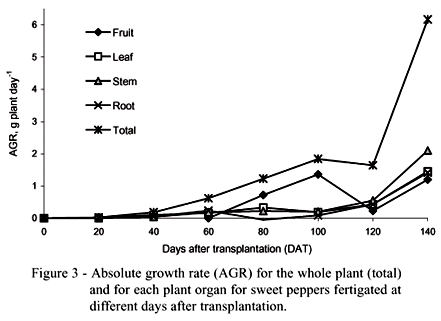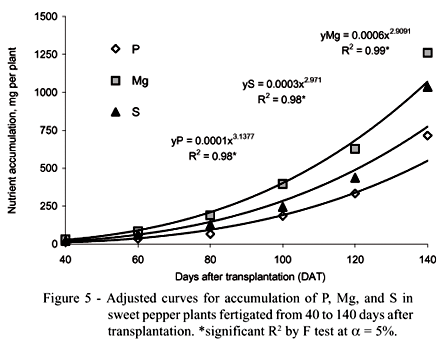Information on nutrient demand during each growth stage is essential for efficient application of nutrients. A pot experiment was carried out with a Typic Hapludox under greenhouse conditions in Botucatu, SP, Brazil, aiming was to determine nutrient uptake and partition of sweet pepper plants, cultivar Elisa in randomized block design with four replications. The fertigation was simulated through 2-L PET bottles (neck down with a tube and a flow regulator at the end, simulating a drip irrigation system). Four plants per replication were collected at eight growth stages (0, 20, 40, 60, 80, 100, 120 and 140 days after the seedling transplant - DAT). The period of largest extraction of nutrients for the plant occurred from 120 to 140 DAT, which coincides with the highest accumulation of dry phytomass. The highest Mg and Ca accumulation occurred in the leaves, while N, K, S and P were mostly accumulated in the fruits. Only 8 to 13% of the total amount of the accumulated macronutrientes at 140 DAT were absorbed up to the 60th DAT. Between the 61st and 100th DAT, K was the most absorbed macronutrient (60% of the macronutrients accumulated during the whole cycle). P, Ca and S were the most absorbed nutrients at the end of the cycle. Considering rates (g per plant), the most absorbed macronutrients were: N (6.6) > K (6.4) > Ca (2.6) > Mg (1.3) > S (1.1) > P (0.7).
Capsicum annuum L.; irrigation; greenhouse; growth












